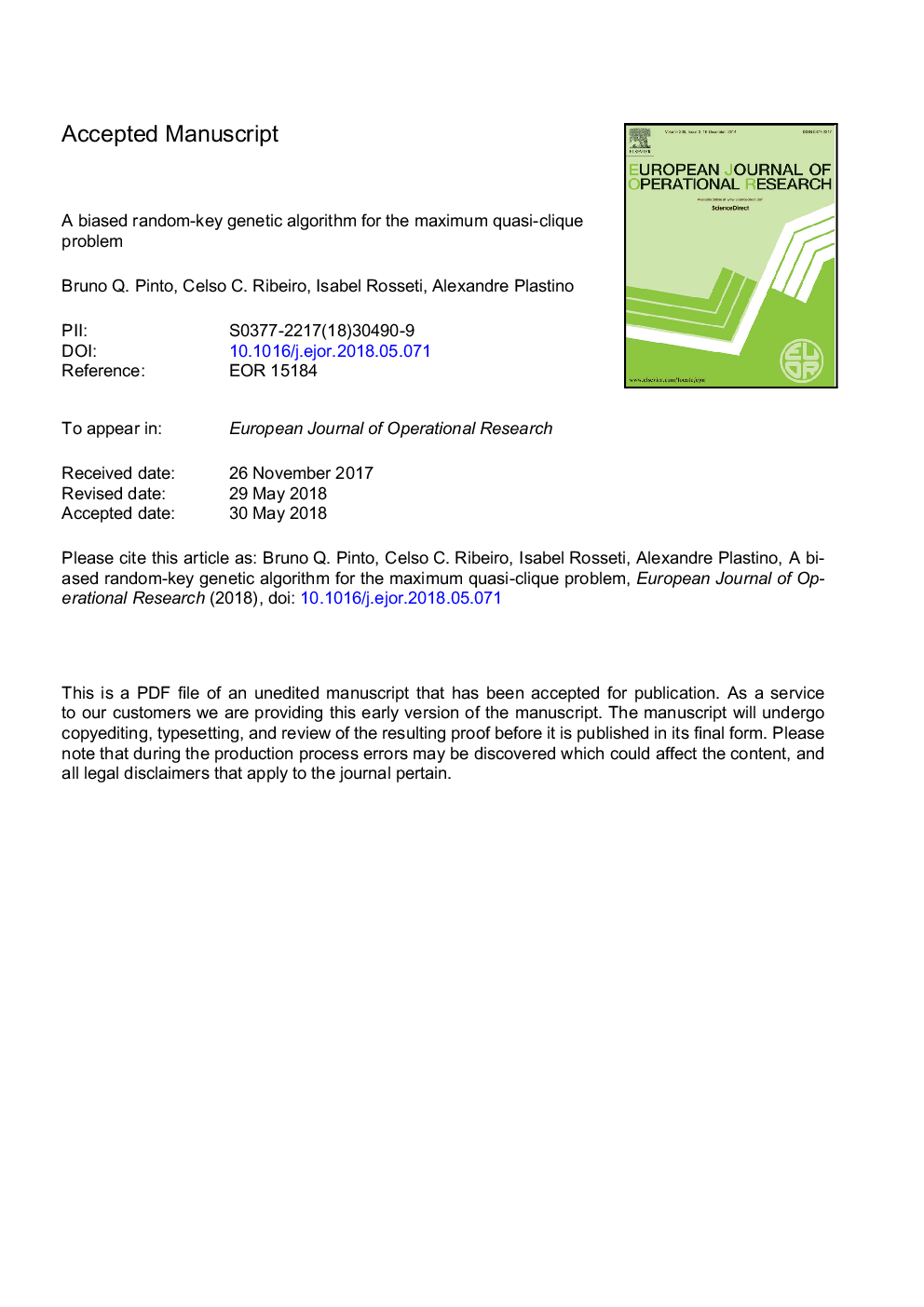| Article ID | Journal | Published Year | Pages | File Type |
|---|---|---|---|---|
| 6894420 | European Journal of Operational Research | 2018 | 37 Pages |
Abstract
Given a graph G=(V,E) and a threshold γâ¯ââ¯(0, 1], the maximum cardinality quasi-clique problem consists in finding a maximum cardinality subset C* of the vertices in V such that the density of the graph induced in G by C* is greater than or equal to the threshold γ. This problem is NP-hard, since it admits the maximum clique problem as a special case. It has a number of applications in data mining, e.g. in social networks or phone call graphs. In this work, we propose a biased random-key genetic algorithm for solving the maximum cardinality quasi-clique problem. Two alternative decoders are implemented for the biased random-key genetic algorithm and the corresponding algorithm variants are evaluated. Computational results show that the newly proposed approaches improve upon other existing heuristics for this problem in the literature. All input data for the test instances and all detailed numerical results are available from Mendeley.
Related Topics
Physical Sciences and Engineering
Computer Science
Computer Science (General)
Authors
Bruno Q. Pinto, Celso C. Ribeiro, Isabel Rosseti, Alexandre Plastino,
